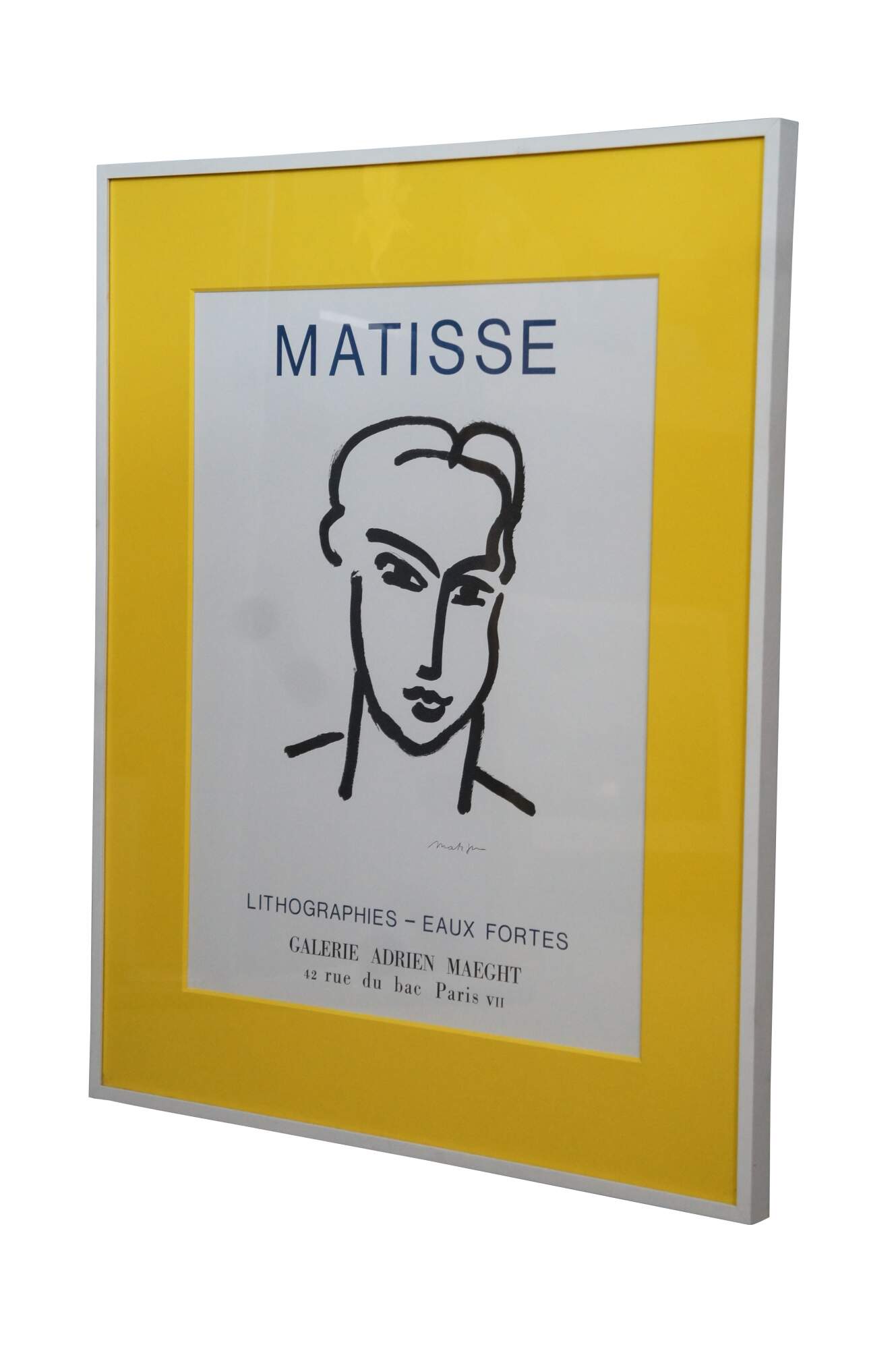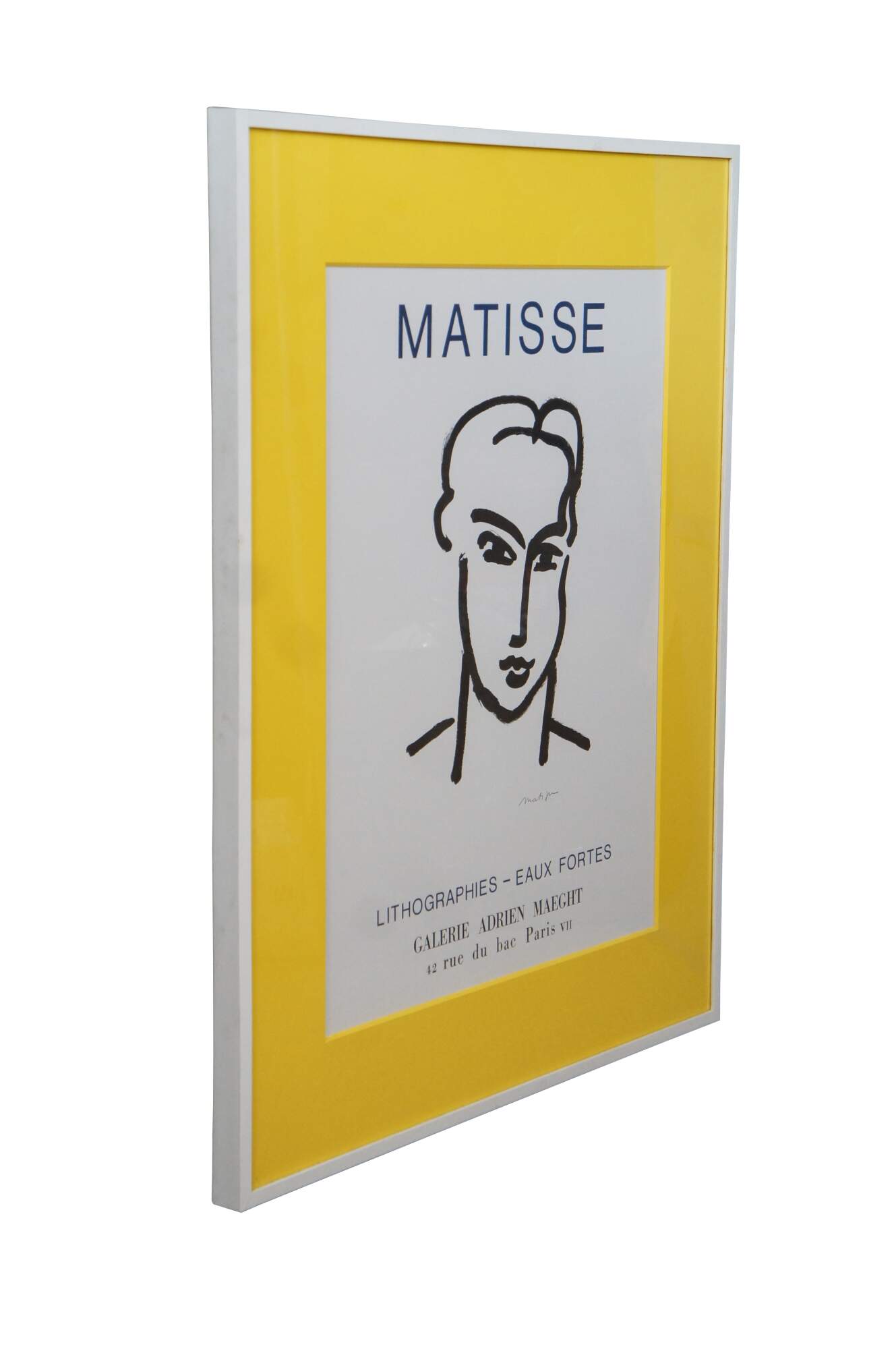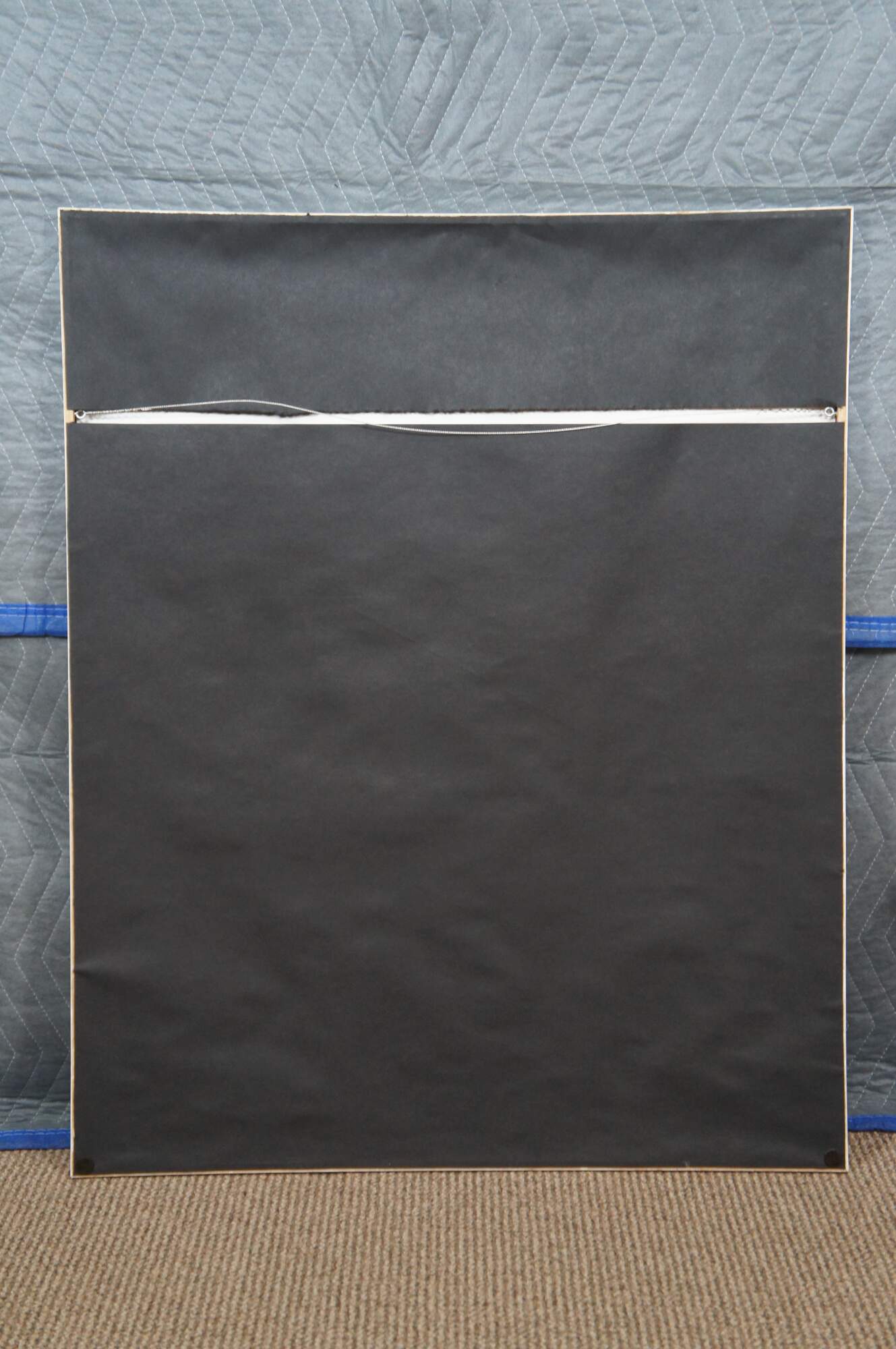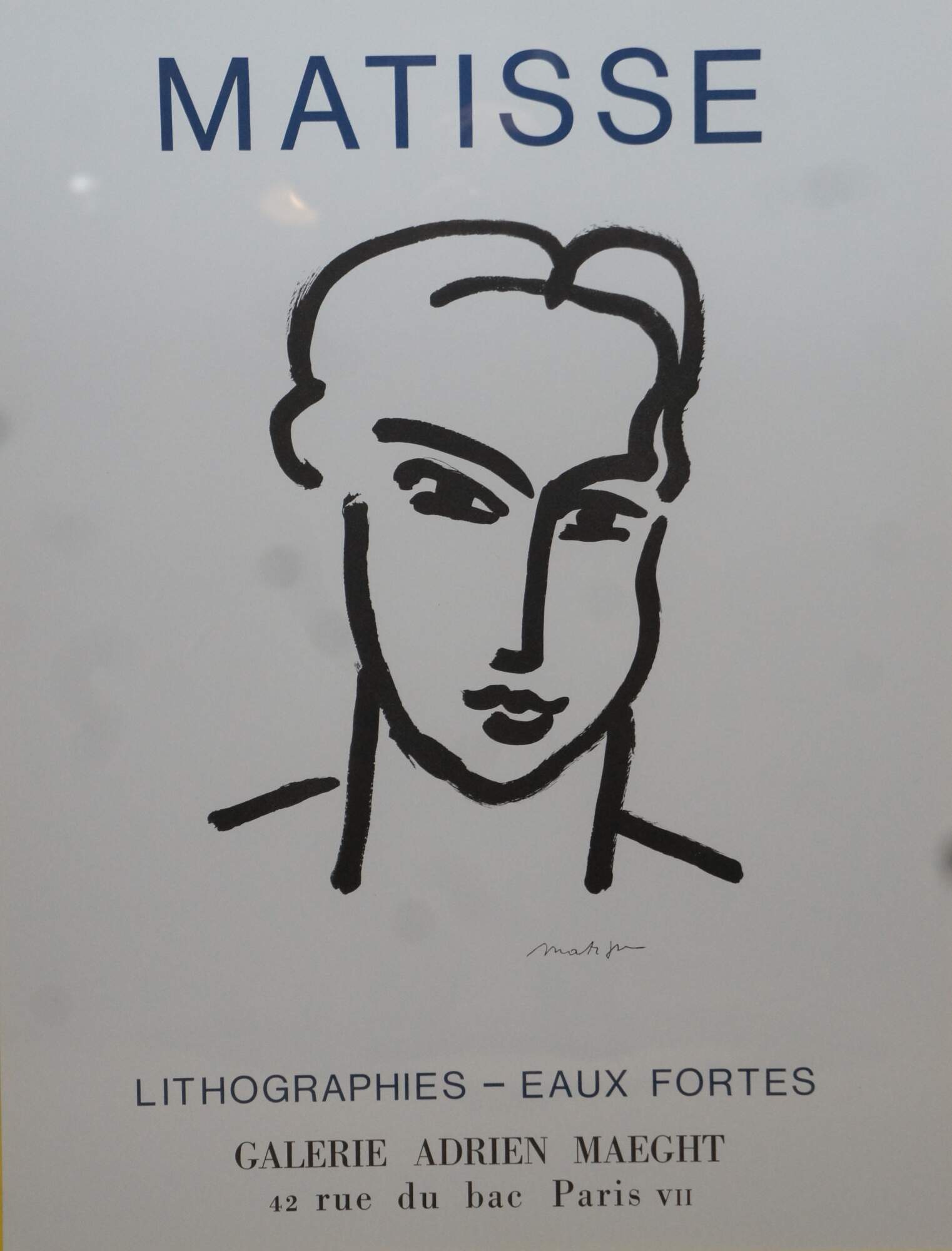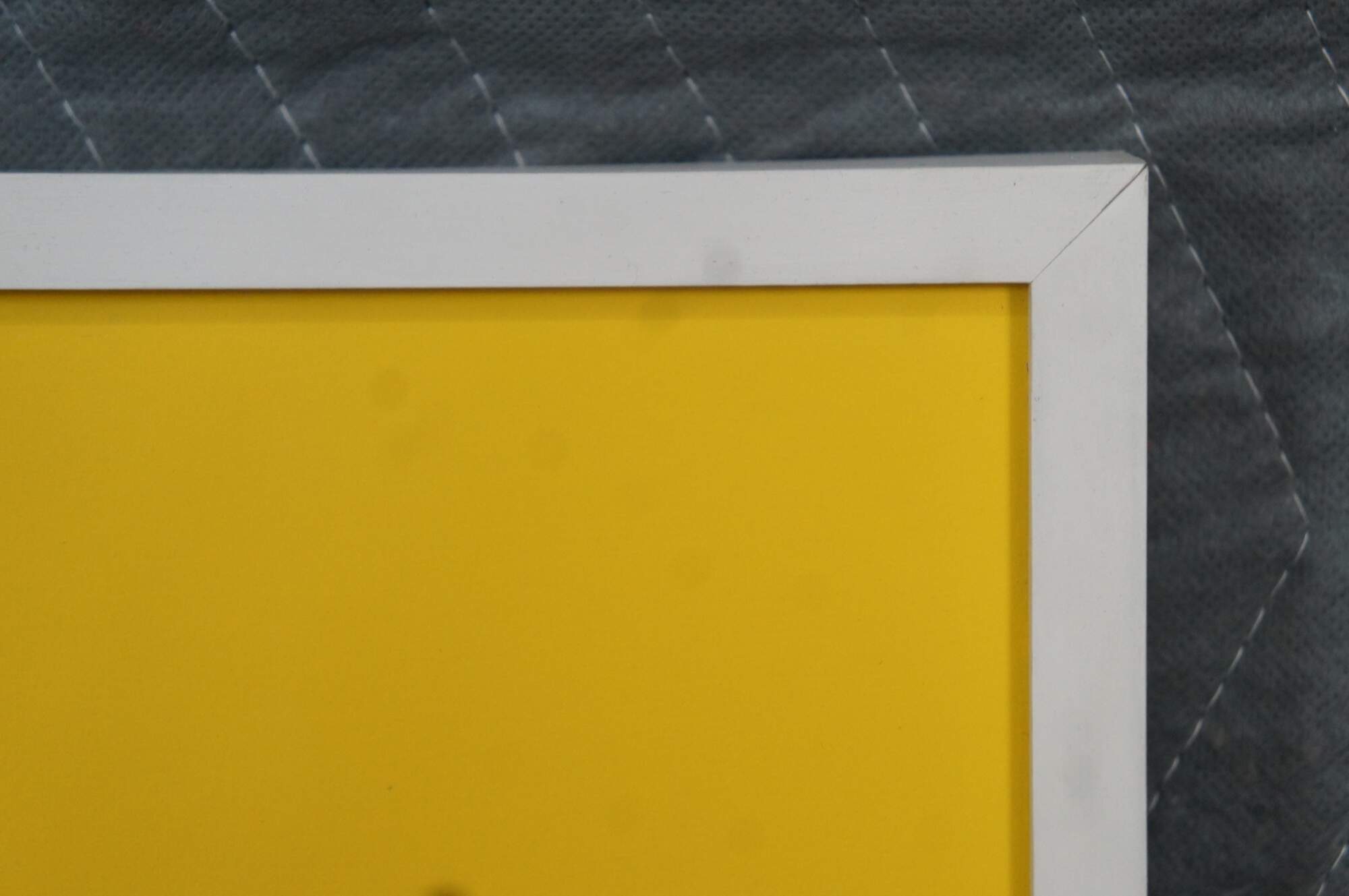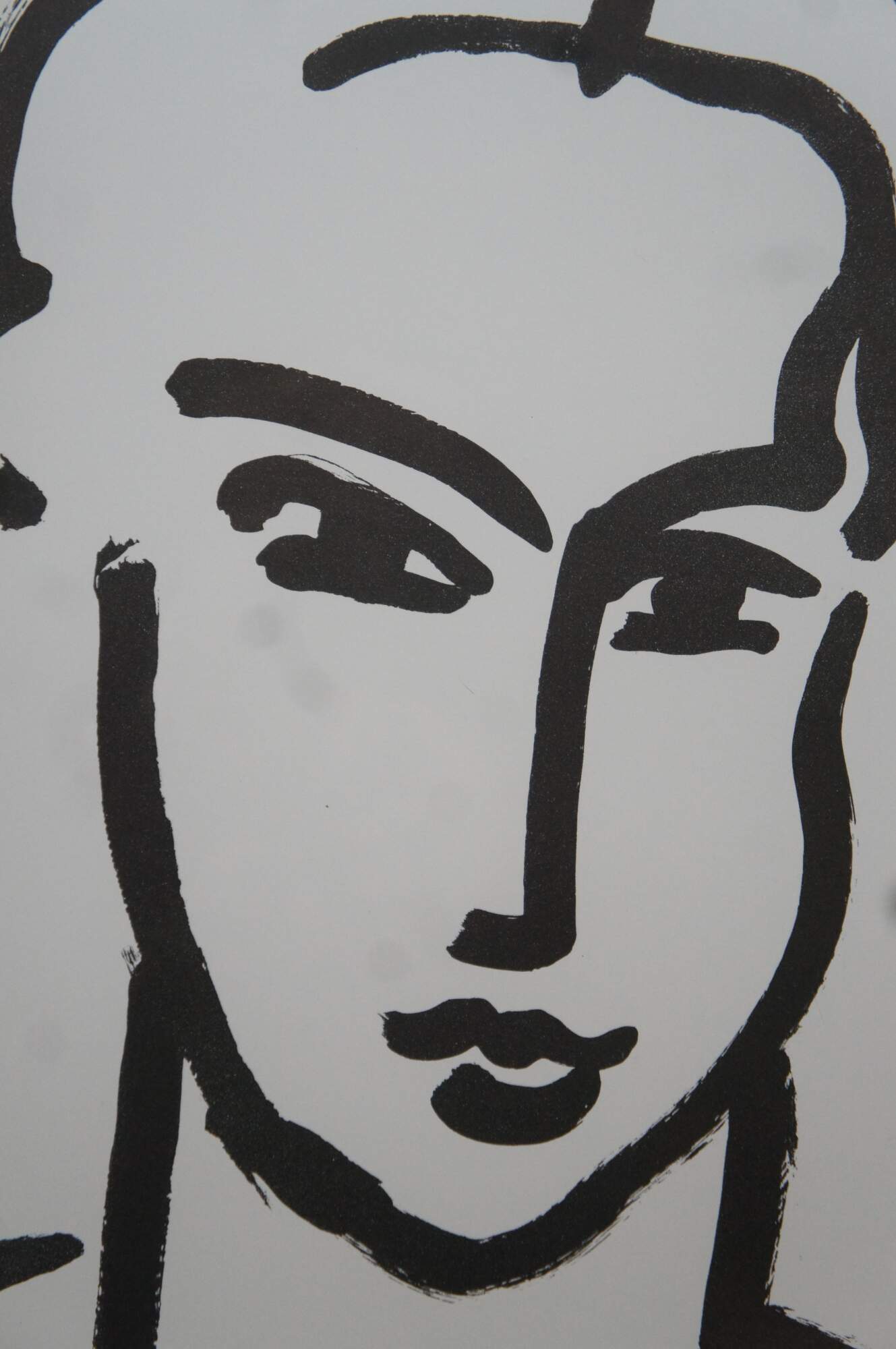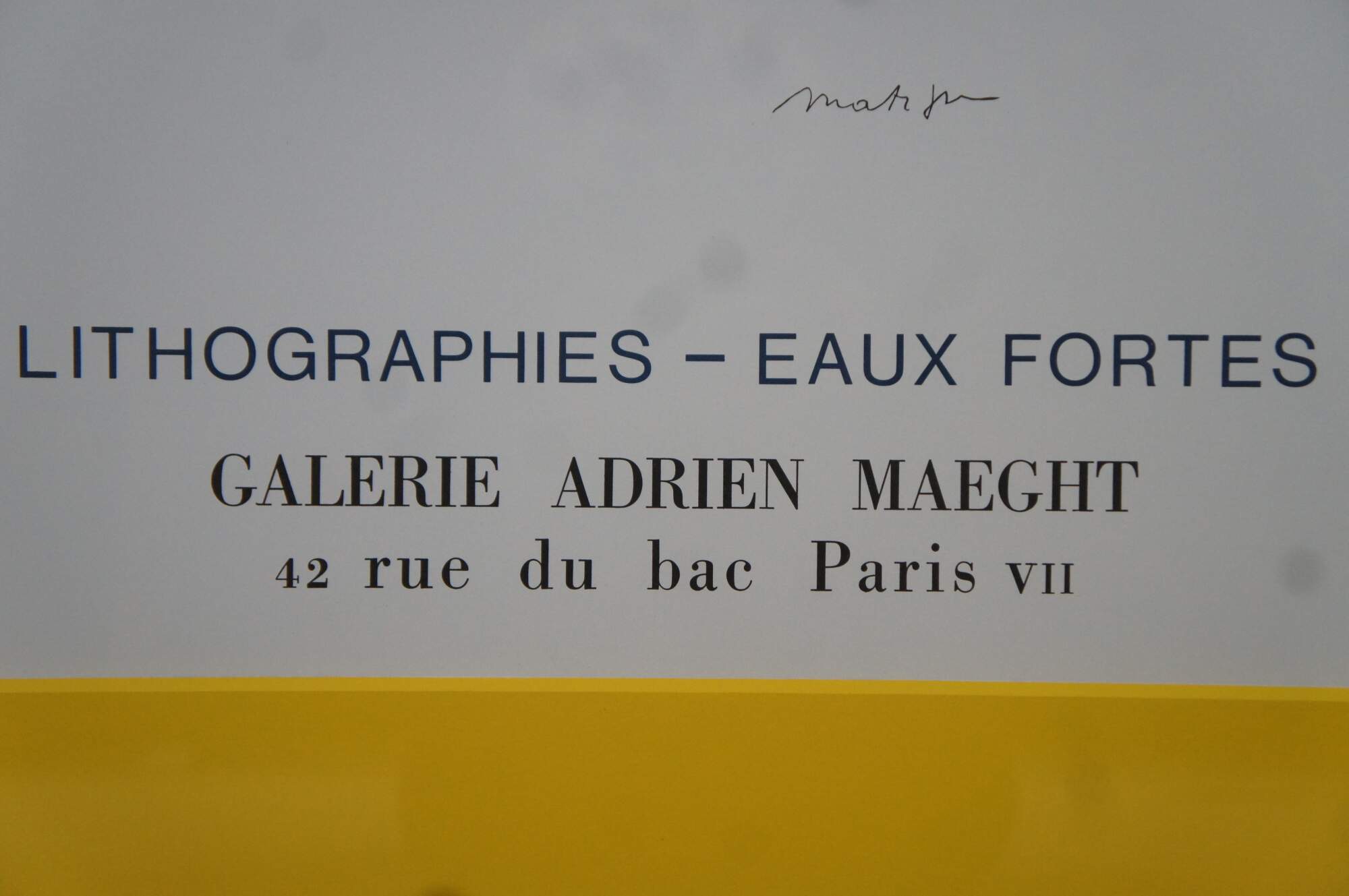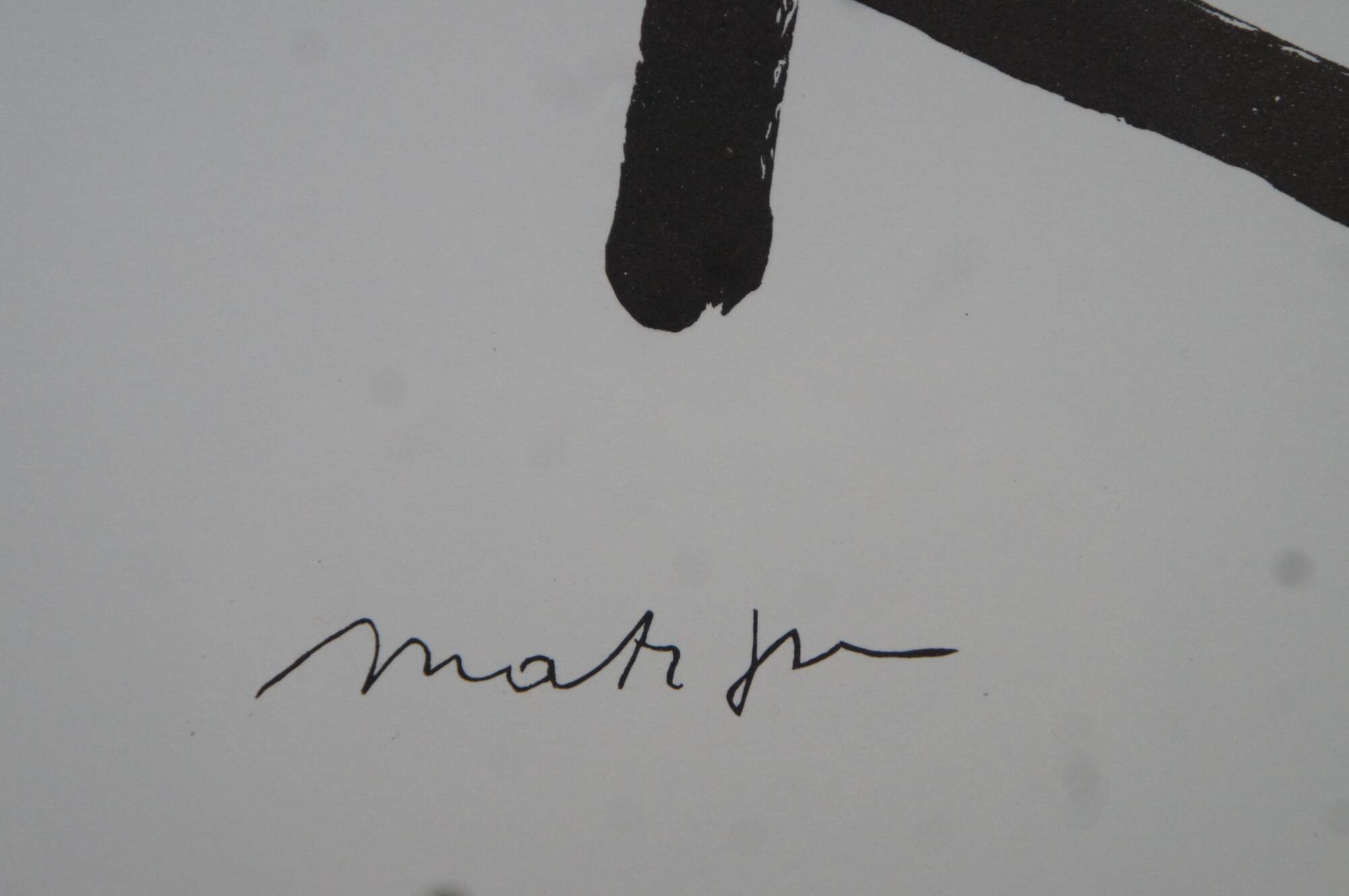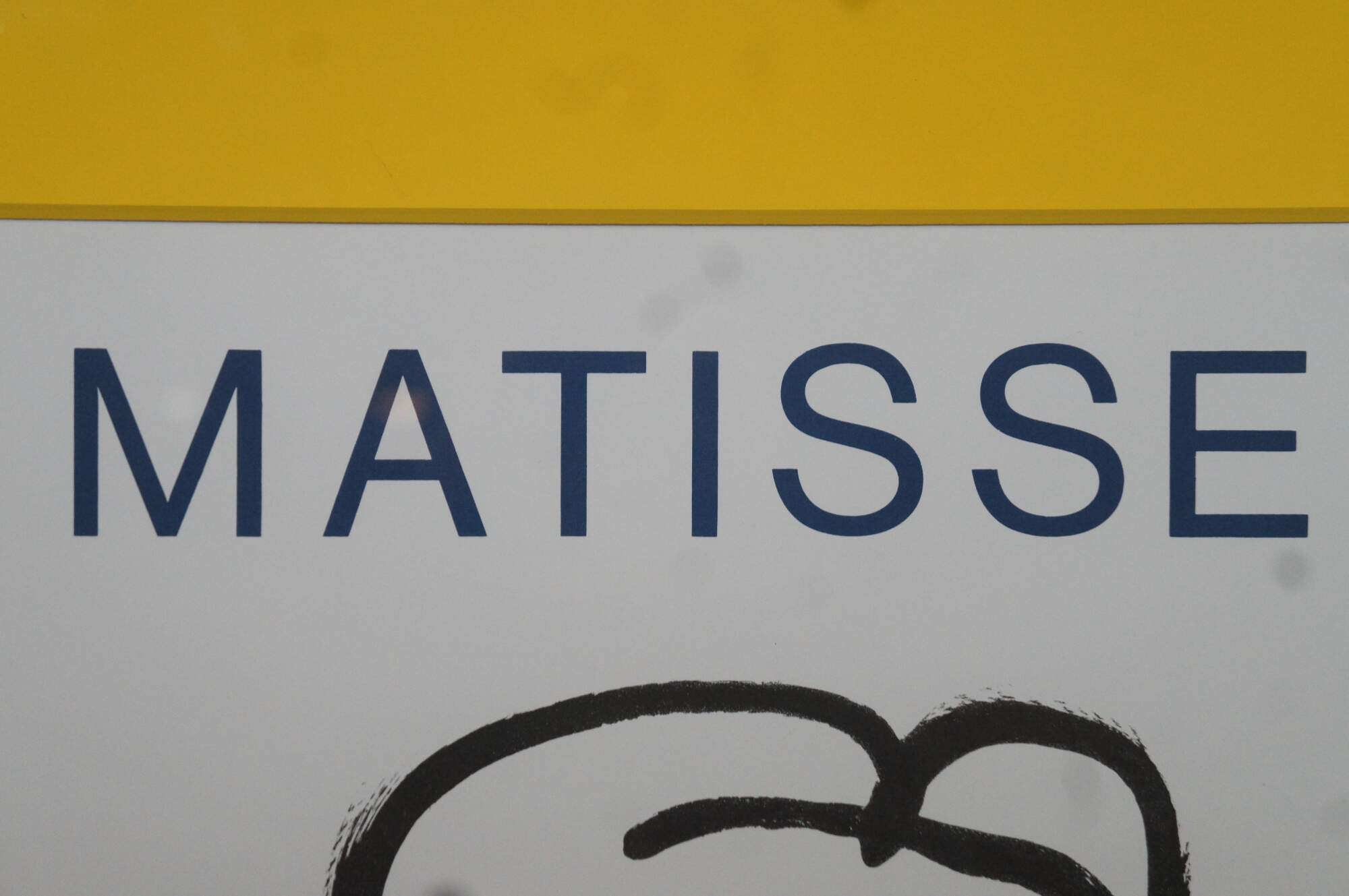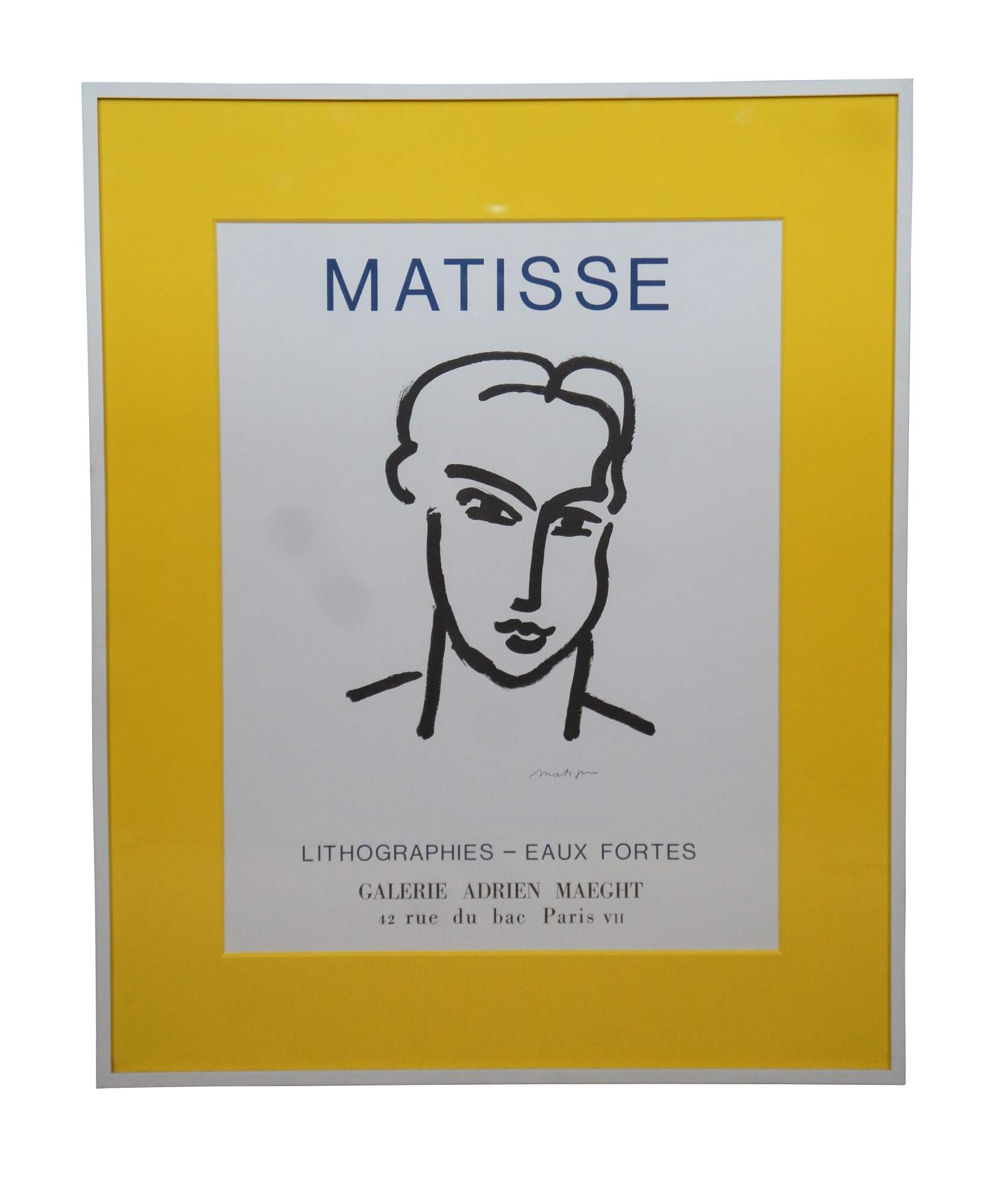
Original 1964 Matisse Lithographs Gallery Exhibition Ad Poster Paris France 35"
Sold
Shipping:
Free Shipping Included
Delivery:
Estimated 2-15 Business Days
Payments:
Credit Card, Check, Cash, PayPal, Apple Pay, Venmo
Returns:
30 Days 100% Money Back Guarantee, Buyer Pays Return Shipping
Description
Framed poster print advertising the 1964 exhibition of Matisse – Lithographies – Eux Fortes at the Galerie Adrien Maeght, featuring Grande Tete de Katia. Framed in white with bright yellow mat.
“The Galerie Maeght is a gallery of modern art in Paris,[1] France, and Barcelona, Catalonia, Spain. The gallery was founded in 1936 in Cannes.[2] The Paris gallery was started in 1946 by Aimé Maeght. The artists exhibited are mainly from France and Spain.
The Maeght gallery was inaugurated with the Henri Matisse exhibition in December 1945 in Paris. From 1946, Bonnard, Braque, Marchand, Rouault, Baya exhibited for the first time at the Parisian gallery. In 1949, Andry-Farcy exhibited his collection of abstract art from the Grenoble museum there during the exhibition The First Masters of Abstract Art.[4]
In 1956, Paule and Adrien Maeght opened their own gallery at 42, rue du Bac in Paris, with an exhibition by Alberto Giacometti. The new generation of “Maeght” artists is exhibited there: Kelly, Cortot,[5] Bazaine, Derain, Tal-Coat, Palazuelo, Chillida, Ubac, Fiedler. They were joined in 1966 by Bacon, Riopelle, Tàpies, Rebeyrolle, Bury, Adami, Monory.
In 1964, Adrien Maeght created the ARTE printing works in the heart of Paris, where all Maeght editions have been produced ever since. With more than 12,000 titles published, Maeght Éditeur is recognized as the most important publisher of lithographs and engravings in the world.
Today, the Maeght gallery and the editions are managed by Isabelle Maeght. The exhibitions allow visitors and collectors to find the works of historical artists such as Miró, Calder, Braque, Matisse, Chagall, Tàpies, Chillida, Gasiorowski, Rebeyrolle, Monory, Del Re, Depin, Doerflinger, Couturier, Levy.”
“Henri Matisse was born in Le Cateau-Cambrésis in northern France on December 31, 1869. The son of a middle-class family, he studied and began to practice law. In 1890, however, while recovering slowly from an attack of appendicitis, he became intrigued by the practice of painting. In 1892, having given up his law career, he went to Paris to study art formally. He joined Gustave Moreau's studio at the Ecole des Beaux-Arts where he met Camoin, Manguin, Marquet and Jean Puy.
French painter and sculptor Henri Matisse was the primary figure in the group of artists known as the fauves and a major influence on twentieth-century painting. In the 1890s Matisse studied in Paris as a pupil of Gustave Moreau at the Ecole des Beaux-Arts. His style, deceptively simple, employs perfection of line to suggest the subject and, usually, the happy application of bright colors to enhance the image.
From the 1920s until his death, Matisse spent much time in the south of France, particularly Nice, painting local scenes with a thin, fluid application of bright color. In his old age, he was commissioned to design the decoration of the small Chapel of Saint-Marie du Rosaire at Vence (near Cannes), which he completed between 1947 and 1951. Often bedridden during his last years, he occupied himself with decoupage, creating works of brilliantly colored paper cutouts arranged casually, but with an unfailing eye for design, on a canvas surface.
He is best known for his still lifes and nudes. Matisse produced a large body of graphic work which included etchings, drypoints, woodcuts, lithographs, monotypes, and aquatints, as well as many book illustrations. In his later years, when he was an invalid, he began his highly acclaimed series of cut-out collages which he called ""drawings with scissors."" He was honored with the Grand Prize at the Venice Biennale in 1950, and has consistently been exhibited in the world's finest galleries and museums.
Matisse died in Nice on November 3, 1954. Unlike many artists, he was internationally popular during his lifetime, enjoying the favor of collectors, art critics, and the younger generation of artists.”
Condition
Very Good
Dimensions
28.25” x 1.25” x 34.75” / Sans Frame - 19.5” x 25.5” (Width x Depth x Height)
